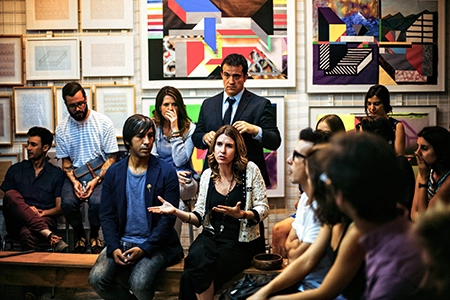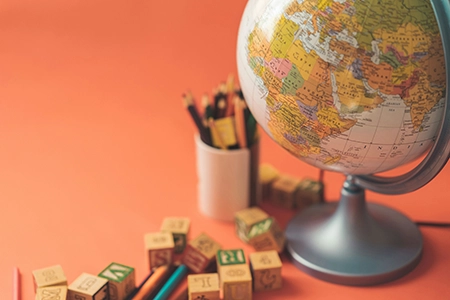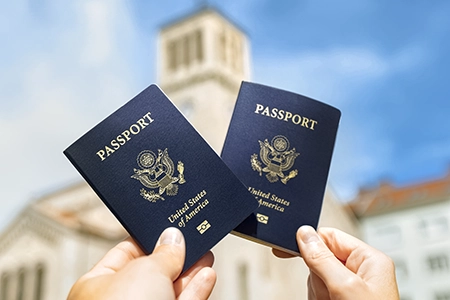The translator assumes a pivotal and profound role in our diverse and interwoven world. As the silent envoy of communication, they build bridges between disparate cultures and communities. But the task at hand goes beyond mere translation of words and phrases. Translators must navigate a complex ethical landscape where sensitivity, accuracy, and representation are paramount. In this article, we delve into the moral intricacies translators must consider to ensure their work resonates across linguistic divides.
The Weight of Words: Sensitivity in Translation
Translation is not just about converting words from one language to another; it’s an art that requires cultural sensitivity and diplomatic skills. Words hold emotions, histories, and cultural nuances that can’t be ignored. For sensitive topics like political discourse, religious texts, or social issues, the translator’s choices can have far-reaching implications. A skilled and ethical translator must deeply understand the source and target cultures, ensuring that the original message is conveyed accurately without causing controversy or perpetuating stereotypes.
Understanding Cultural Contexts
To achieve a successful and sensitive translation, it is crucial to first have a deep understanding of the cultural contexts from which the text originates and to which it will be conveyed. Every culture has its own unique set of taboos, historical sensitivities, and distinct ways of addressing them. To be an effective translator, one must possess a keen sense of cultural awareness, acting as a cultural detective who can decipher the subtle cues and hidden meanings behind the words. Even a seemingly harmless phrase in one culture may be offensive in another. Therefore, it is the translator’s responsibility to identify any potential risks and skillfully steer around them, ensuring that the translation adheres to the cultural norms and expectations of the target audience. This cultural literacy is not just valuable, but rather, it is vital to the ethical practice of translation.
Balancing Act: Literal vs. Conceptual Translation
After laying the cultural groundwork, the translator is faced with the challenge of choosing between a literal translation and a conceptual one. While literal translations may convey the words accurately, they may lose the intended meaning, particularly when idiomatic expressions or culturally specific references are involved. Conceptual translations, on the other hand, aim to convey the idea rather than the exact wording, but they must be handled with care to avoid distorting the original message. The ethical translator must carefully weigh each phrase, sentence, and paragraph, considering how the translation will be received while remaining as true as possible to the author’s intent. This balancing act is not just linguistic agility but also an ethical choice that can determine the success of a translation.
The Translator as Mediator
When it comes to sensitive topics, the role of the translator is crucial. They are tasked with not just conveying words but also the emotions, intentions, and nuances behind them. This requires a deep sense of responsibility and empathy. An ethical translator must understand the power of words to either unite or divide, to heal or to hurt. Their translation should act as a bridge between cultures, encouraging understanding and dialogue. In this way, the translator becomes a communication ambassador, ensuring that knowledge and ideas are transferred across cultures with sensitivity and respect for everyone involved.
Fidelity to the Source: The Quest for Accuracy
Translation that is both accurate and ethical is essential. Achieving this requires a translator who not only has a mastery of the language but also a deep commitment to the author’s intentions. A common challenge in translation is when literal translations don’t effectively convey the same meaning or emotion in the target language. In such cases, the translator must find the right balance between precision and adaptation. This involves ensuring that the translated text remains true to the original while also being understandable and relevant to the new audience.
Translation is not just about converting words from one language to another. It is also about capturing the tone, style, and rhythm of the original text. A good translator must preserve the author’s voice while adapting it to resonate with a new audience. This requires expertise in manoeuvring through linguistic nuances, selecting the right colloquialisms, level of formality, and cultural references that align with the source material. The process of translation is meticulous, requiring a deep understanding of the subtleties of both languages and a disciplined approach to research and cross-reference. A translator must become an invisible conduit, allowing the essence of the original work to flow through into another language and culture. By doing so, the translator upholds the integrity of the original work, ensuring that the translated text stands as a true and faithful counterpart.
The Mirror of Meaning: Representation Without Bias
A skilled translator understands that representation in translation is not just about the words but also about capturing the true essence of the text. They are aware of personal biases that could potentially distort the original content and are committed to remaining unbiased while avoiding the temptation to embellish or sanitise the text. Rather than offering an interpretation, a translator’s goal is to create a faithful representation of the original text, reflecting its true essence to the reader with clarity and confidence.
Upholding the Author’s Perspective
When translating a work, it is essential for the translator to uphold the perspectives of the author. The translator must be careful not to let their own cultural biases and preconceptions affect the author’s narrative. This is especially important when dealing with works that discuss politically charged or ideologically sensitive topics. The translator’s job is not to censor or advocate but to provide the readers with an unobstructed view of the author’s world. This approach helps to celebrate the diversity of thought and expression that enriches our global discourse, enabling readers to engage with the original material as authentically as possible.
Maintaining the Subtleties of Tone and Nuance
Every piece of written communication has a unique tone and nuance that gives it its own identity. When translating, it’s easy to lose these subtleties, but they are vital for preserving the author’s original voice. Ethical translators must be skilled at detecting these subtle differences and conveying them in the target language. This requires a sensitivity to linguistic subtleties that go beyond mere vocabulary and extend into the realm of cultural expression. It’s about capturing the right rhythm, humour, sarcasm, or solemnity that conveys the same meaning in the translation as it does in the original text.
Avoiding the Trap of Over-Localization
Translation must involve localisation to make content accessible to the target audience. However, there exists a fine line between proper localisation and over-localisation. Over-localisation happens when the translator adjusts the content too much to fit the target culture, potentially altering the original message or cultural context. Ethical translators should be careful not to remove the cultural identity of the source text while trying to make it relatable to the audience. The challenge lies in preserving the cultural essence of the original while still ensuring that the translation is engaging and understandable to the new audience. This balance is critical in maintaining the integrity of the text and respecting the cultural heritage from which it originates.
The Integrity of the Text: A Translator’s Responsibility
As a translator, it is an important responsibility to maintain the authenticity of the original text. This involves making tough decisions regarding idioms, humour, cultural references, etc. The translator has to balance between staying true to the original while making the text accessible and interesting for the new audience. It is crucial for the translator to be ethical while doing so, keeping in mind the source material along with the expectations and sensibilities of the target audience.
Navigating Idiomatic Challenges
Translating idioms can be challenging since they often contain cultural wisdom and wit that cannot be directly translated. The translator has the responsibility to convey the essence of these expressions without losing their impact or rendering them nonsensical. This task often requires creative solutions, such as finding similar phrases in the target language or explaining the idiom’s meaning in a way that maintains the flow of the text. It’s a balancing act that tests the translator’s linguistic creativity and cultural knowledge, ensuring that the translation remains true to the spirit of the source material.
Translating Humour with Finesse
Translating humour can be a daunting task, as it heavily relies on the nuances of language, cultural context, and timing. The translator must analyse the workings of a joke or humorous passage to recreate its intended effect in another language. This requires a deep understanding of both the source and target cultures and the ability to translate the humour to elicit the same reaction as the original without any awkward explanations. The text’s integrity is maintained when the humour is just as effective in the translation as in the original.
Respecting Cultural References
Every text has cultural references that give it a unique identity and situate it in a specific time, location, and social context. When translating such references, the translator must decide whether to keep them as is, substitute them with more familiar concepts for the target audience, or explain them. This decision must respect the text’s integrity, allowing readers to understand the original cultural landscape and its significance. Proper handling of cultural references creates a linguistic and cultural bridge that enhances the translation’s value.
Adapting to Audience Expectations
The primary responsibility of a translator is to accurately translate the original text. However, they must also adjust the translation to suit the target audience’s language proficiency, cultural background, and reading habits. A good translator must create a translation that is easy to understand yet not too simple and engaging without being off-putting. The translator must maintain the original text’s integrity while ensuring that it feels natural and compelling to the new audience. It takes a skilled translator to achieve this balance.
Final Word
Translation is not simply a matter of linguistic skills but also a deep ethical commitment. The translator is tasked with the delicate balancing act of navigating a minefield of sensitivity while seeking accuracy, much like a cartographer of language. Their goal is to represent the original text with the integrity of a historian. In doing so, they uphold the dignity of the written word and the sanctity of cross-cultural communication. As the world becomes increasingly interconnected, the role of the ethical translator is more vital than ever, ensuring that as languages and cultures meet, they do so with respect, understanding, and authenticity.
Further Reading
- Ethical Aspects of Translation: Striking a Balance between Following Translation Ethics and Producing a TT for Serving a Specific Purpose, Rafat Yahya Alwazna, King Abdulaziz University
Follow Us on Your Favourite Social Network




